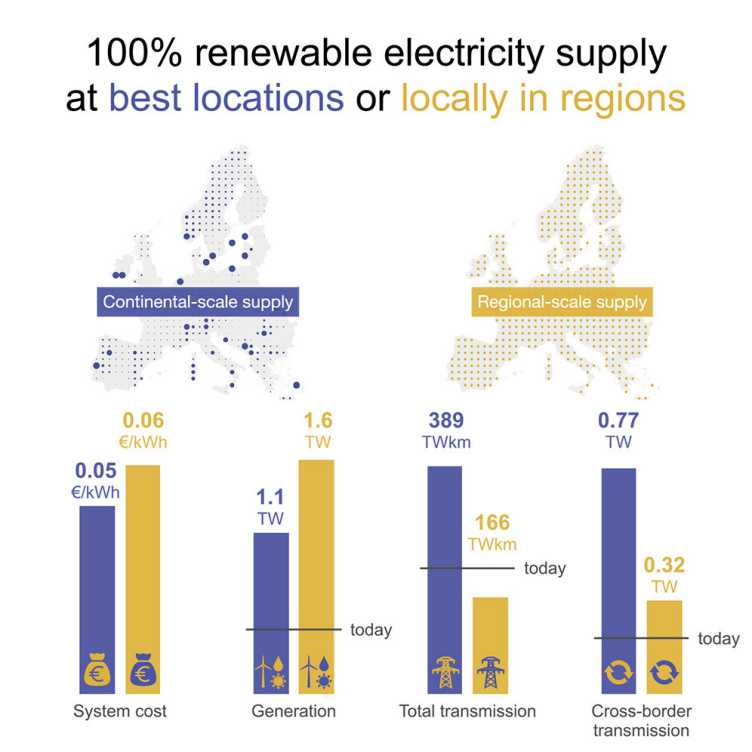Uncertainty quantification for fully renewable electricity in Europe
Principal investigator: Dr. S. Marelli
Collaborators: Prof. Dr. S. Pfenninger (Institute for Environmental Decisions, ETH Zürich) and external page Prof. Dr. J. Lilliestam (external page Institute for Advanced Sustainability Studies, Potsdam University)
Description

When considering a transition to fully renewable electricity production in Europe, the available potential is sufficient to enable supply on different scales, from self-sufficient, subnational regions to an interconnected continent. In this project, we study the role this scale can have on the costs associated to the transition. We demonstrate that the continental-scale system is the cheapest, but also that systems designed at the national scale and below are possible at cost penalties of 20% or less external page [1], which is considerably lower than current estimations.
All the predictions in this study are fully uncertainty-aware, and cutting edge tools from the uncertainty quantification literature are needed to keep the associated simulation costs manageable. These include multi-fidelity surrogate modeling based on polynomial chaos expansion (PCE), as well as PCE-based variance decomposition for global sensitivity analysis.
We demonstrate that the key players across different scales are related to land use, and they vary across European regions. As a consequence, it is the geographical distribution of the generation and transmission infrastructure that dominates the costs of a transitional to renewable energy.

Für einen Übergang zur vollständig erneuerbaren Stromerzeugung in Europa reicht das verfügbare Erzeugungspotenzial aus, um eine Versorgung auf verschiedenen Stufen zu ermöglichen: von autarken subnationalen Regionen bis zu einem zusammengeschalteten Kontinent. In diesem Projekt untersuchen wir, welche Rolle die Wahl dieser Stufe für Kosten eines Wechsels auf erneuerbare Energien spielt. Wir zeigen, dass Systeme auf kontinentaler Stufe die billigsten sind, aber auch, dass Systeme auf nationaler Stufe und darunter, mit Teuerungen von 20% oder weniger möglich sind external page [1], was erheblich unter den aktuellen Schätzungen liegt.
Alle Vorhersagen in dieser Studie berücksichtigen Ungewissheiten, und es werden modernste Werkzeuge aus der Literatur zur Quantifizierung der Ungewissheiten benötigt, um die damit verbundenen Simulationskosten überschaubar zu halten. Dazu gehören die multi-fidelity Ersatzmodellierung basierend auf der polynomial chaos expansion (PCE) sowie die PCE-basierte Varianzzerlegung für die globale Sensitivitätsanalyse.
Wir zeigen, dass die Hauptparameter auf verschiedenen Stufen mit der Landnutzung zusammenhängen und in den europäischen Regionen unterschiedlich sind. Infolgedessen dominiert die geografische Verteilung der Erzeugungs- und Übertragungsinfrastruktur die Kosten eines Übergangs zu erneuerbaren Energien.